As I wandered through the Roman Baths in Gijón, surrounded by the historic Campo Valdés, I felt a strong connection to the ancient world. The intricate mosaics and remnants of thermal pools whispered stories of communal gatherings and rituals. It's remarkable how these well-preserved ruins offer a tangible link to the past. I found myself wondering about the daily lives of those who once walked these very stones, their routines, and their reverence for the art of bathing. What truly caught my attention, though, was the unexpected discovery waiting just around the corner.
Historical Significance
The Roman Baths of Campo Valdés, discovered in 1903, are a testament to the rich history of northern Spain. As I explored the site, I was struck by the significance of these ancient ruins. They're more than just relics of the past; they're a window into a civilization that valued community, cleanliness, and leisure. The baths reflect Roman ingenuity and their ability to create spaces that fostered social interaction and personal well-being.
What struck a chord with me was how these baths have endured for centuries. They were hidden beneath layers of history, yet their essence remains intact. Walking through the in situ museum, I could almost imagine the conversations, the warmth of the heated rooms, and the daily rituals that took place here. The Roman Baths offer more than just a glimpse into the past; they provide a tangible connection to the everyday lives of the Romans who once lived in this region. It's a humbling reminder of humanity's enduring spirit and our continuous quest for community and comfort.
Location and Structure
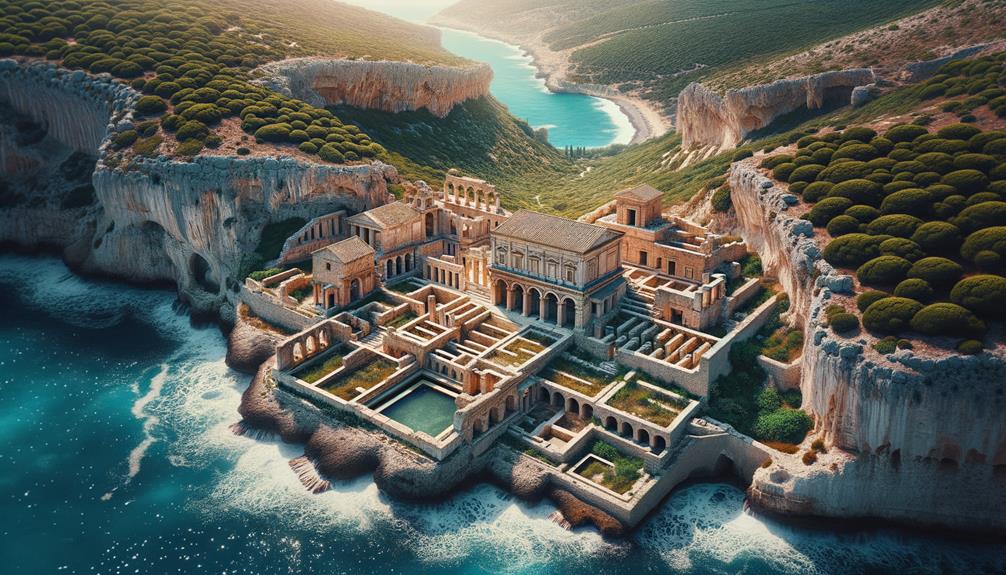
Nestled in front of the church of San Pedro, the Roman Baths of Campo Valdés reveal a fascinating blend of domestic and thermal architecture from the High Imperial period. These baths, discovered outside the ancient Roman wall, showcase the ingenuity and sophistication of Roman engineering. As I stood at sea level, in the subsoil of Campo Valdés, I could easily imagine the bustling activity that once filled these spaces.
The structure is divided into two distinct units: the domestic area and the thermal area. The domestic section is where daily life unfolded, with spaces likely including living quarters and social rooms. The thermal area comprises a series of rooms designed for bathing and relaxation, reflecting the Romans' advanced understanding of hygiene and wellness.
Opened to the public in 1965, the Roman Baths offer a unique glimpse into the past. Located at GPS coordinates 43.545563, -5.661243, they are firmly rooted in the heart of Gijón. Standing there, I felt a strong connection to the ancient world, appreciating the timeless beauty of these historic baths.
Visiting Information
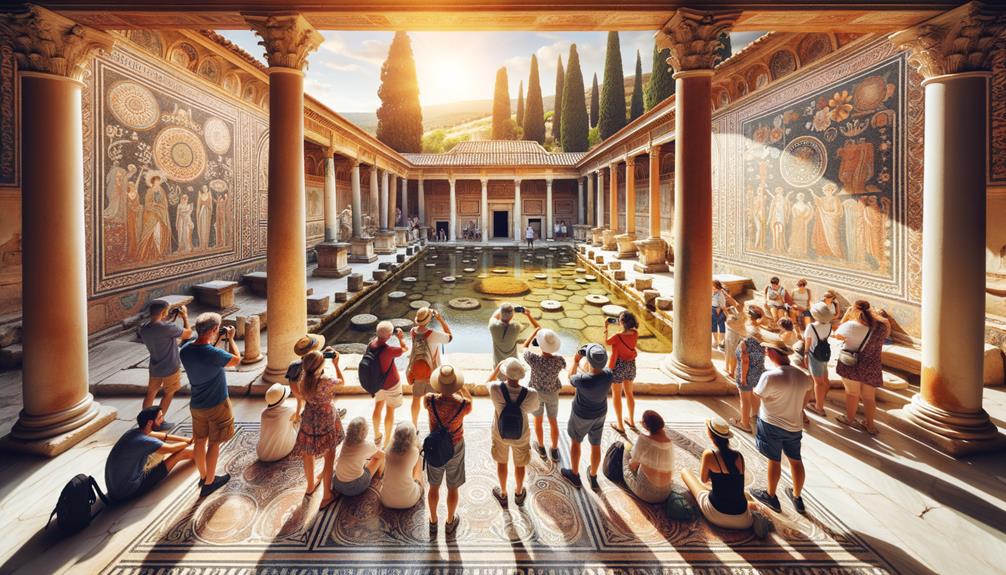
Planning to visit the Roman Baths of Campo Valdés? Here are some helpful tips to make your trip unforgettable. The baths are open from Tuesday to Friday, with morning hours from 9:30 to 14:00 and evening hours from 17:00 to 19:30. On weekends and holidays, they welcome visitors from 10:00 to 14:00 and 17:00 to 19:30. This schedule gives you flexibility to explore this fascinating site.
When planning your visit, consider the following key points:
- Group Bookings: If you're planning to visit with a group, call 985 185 151 to arrange your tour.
- Admission: The good news is that admission is free, and the site offers accessible access for everyone.
- Location: The Roman Baths are located in the subsoil of Campo Valdés, right in front of the picturesque church of San Pedro.
- Contact Information: For more details or to plan your trip, reach out to the official tourism office at contacto@turismoycultura.asturias.es or call 984 493 563.
Exploring the Roman Baths, a gem of northern Spain, is like stepping back in time. Whether you're a history enthusiast or just looking for a unique experience, these baths offer an engaging journey through history.
Nearby Attractions
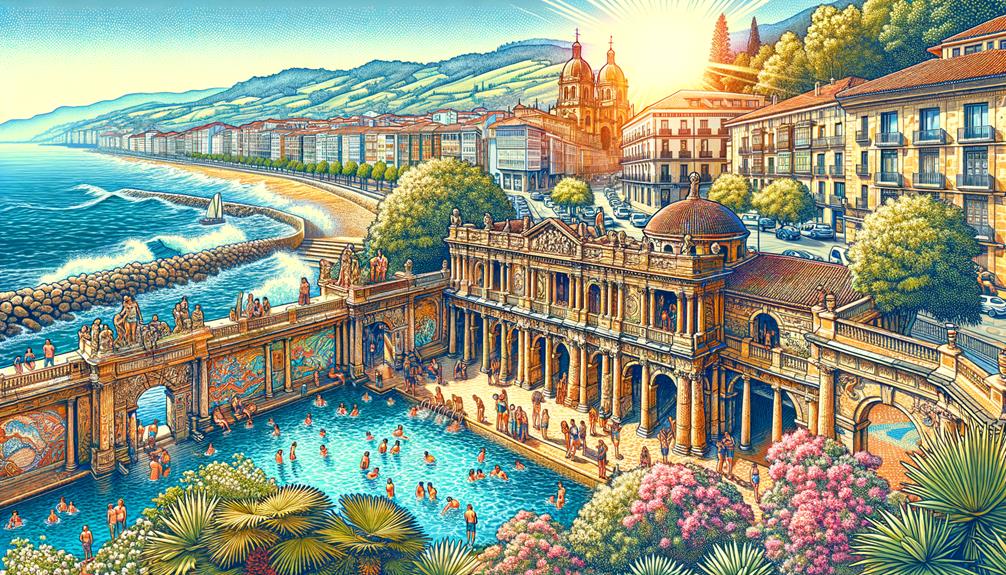
Exploring the area around the Roman Baths of Campo Valdés, I stumbled upon a rich tapestry of coastal villages, each with its own unique charm. These quaint fishing hamlets offer a glimpse into the region's maritime heritage. As I wandered through the villages, I felt the salty breeze and heard the rhythmic lapping of waves, creating a serene backdrop to my explorations.
Nearby, the cities of Asturias offer a wealth of cultural experiences. I strolled through bustling markets where local artisans showcased their crafts, and the aroma of fresh seafood wafted through the air, tempting me to indulge in the region's famed cuisine. Tapas bars and local eateries provided a feast for the senses, with each dish showcasing Asturias' culinary expertise.
Nature enthusiasts will appreciate the nearby coastal trails, which offer breathtaking views of the rugged shoreline. The diversity of experiences around the Roman Baths of Campo Valdés is truly remarkable. From cultural immersion to gastronomic adventures, there's an endless array of attractions waiting to be explored, making every moment unforgettable.
Architectural Highlights
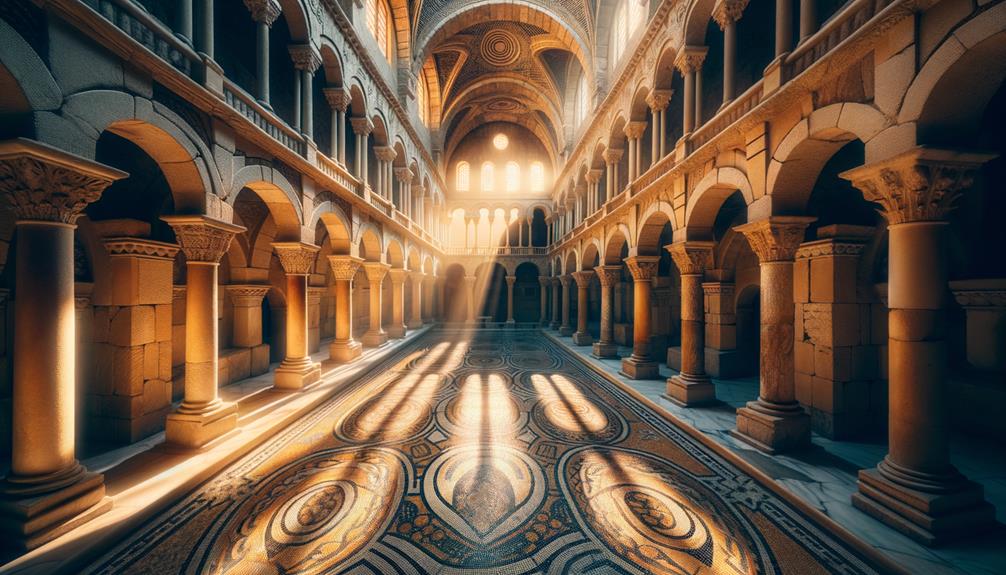
As I wandered through the vibrant coastal villages and bustling markets, my journey led me to the Roman Baths of Campo Valdés, where history and artistry blend together in captivating ways. Stepping into the subsoil of Campo Valdés, I was transported back in time to an era of meticulous craftsmanship and sophisticated design.
The Victorian reception hall is a testament to grandeur, with its intricately painted ceiling showcasing vivid images of the four seasons and an elegant dome that crowns the space. Here, the essence of Roman architectural brilliance is palpable.
Exploring further, I stumbled upon the Great Bath terrace, adorned with Victorian statues of Roman emperors dating back to 1894. The tranquil atmosphere of the terrace provides a perfect setting for reflection and immersion in the ambiance of ancient Rome.
What caught my attention was:
- Victorian Reception Hall: The intricate ceiling illustrations and majestic dome create a sense of awe.
- Great Bath Terrace: The statues of Roman emperors add a touch of elegance to the space.
- Bathing Practices: The insight into Roman rituals and the mineral-rich spa water is fascinating.
- Circular Bath Projections: The lifesize projections of bathers bring the experience to life.
With every step through the Roman Baths, I uncovered a new layer of history, blending the past with the present in a seamless fusion of architecture and culture.
Roman Art and Worship
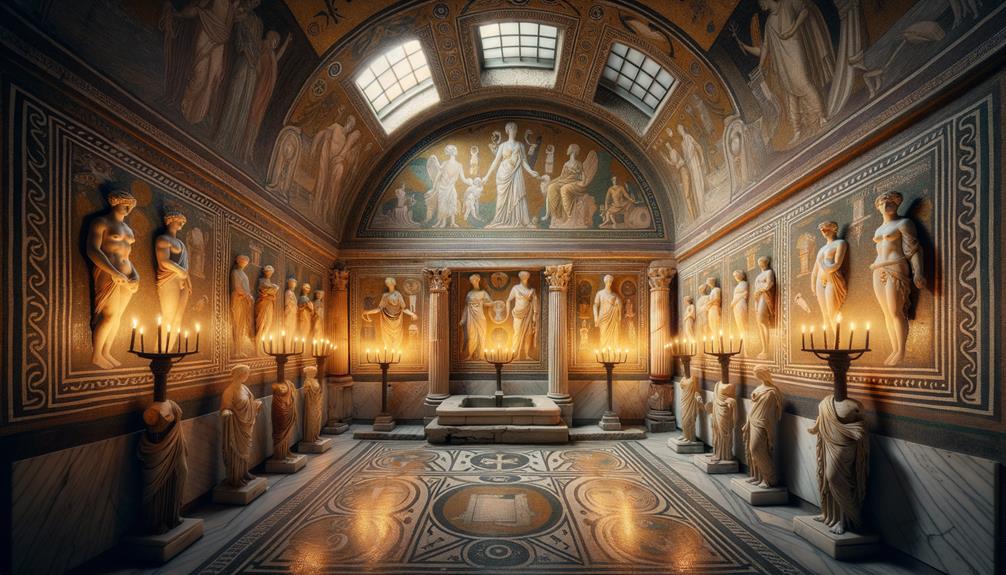
Frequently, I'm struck by the deep connection between art and worship at the Roman Baths of Campo Valdés. The classical temple, dedicated to the goddess Sulis Minerva, showcases this fascinating blend. The great ornamental pediment, featuring the iconic Gorgon's Head, immediately draws my attention. This powerful symbol emphasizes the reverence the ancient visitors held for Sulis Minerva.
In the temple courtyard, worshippers would often bring private altars to participate in rituals honoring the goddess. The facade of the Four Seasons building adds another layer of significance, presenting imagery that resonates with the cycles of nature and life. The practice of throwing curse tablets into the Spring, a ritual meant to invoke the goddess's power, further illustrates the depth of Roman religious practices.
As I explore the Roman Baths, I feel a profound connection to the past, where art and faith seamlessly merged. The collection of artifacts, including the curse tablets now part of the UNESCO Memory of the World Register, vividly captures the devotion and creativity that defined this ancient site.
Archaeological Finds
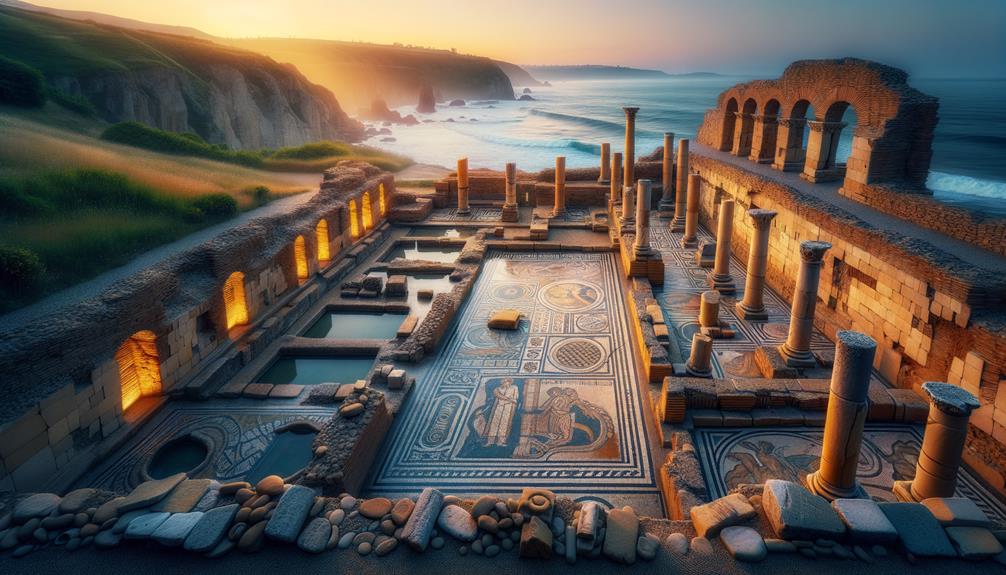
Walking through the Gijón Roman Baths, I'm struck by the incredible number of artifacts that bring ancient Roman daily life into sharp focus. These remarkable finds, from the Beau Street Hoard to the curse tablets, offer intimate glimpses into the lives and beliefs of the people who once thrived here. The preserved structures themselves stand as silent witnesses to an era rich with history and human experience.
Significant Artifacts Discovered
Among the thousands of artifacts unearthed at the Gijón Roman Baths, each object tells a story about the daily lives of the ancient Romans who once thrived in this bustling hub. As I walked through the museum, I was struck by the collection, each piece offering a unique window into the past. The Roman Baths have yielded a remarkable collection of artifacts, reflecting the resourcefulness and daily routines of this ancient civilization.
Some of the most notable discoveries include:
- Intricately designed oil lamps – These provided much-needed light in the dimly lit bathhouses, illuminating the grand architecture and social gatherings within.
- Bronze toiletries – Combs, tweezers, and mirrors that suggest the importance of personal grooming and hygiene among the Romans.
- Ceramic vessels – Used for storing oils, perfumes, and medicinal concoctions, showcasing the blend of luxury and practicality in their daily lives.
- Coins and jewelry – These highlight not only economic activities but also the personal adornments cherished by the Romans.
Exploring these relics, I felt a strong connection to the past, realizing how these artifacts bridge the gap between our modern lives and the ancient world.
Roman Daily Life Insights
Stepping into the exhibit, I was drawn to the array of artifacts that brought daily life in ancient Roman times into sharp focus. The Roman Baths of Campo Valdés are more than just remnants of a bygone era; they offer a glimpse into the everyday lives of the people who once frequented these halls. Among the most fascinating finds were the curse tablets, inscribed with heartfelt pleas to the gods, reflecting the hopes and grievances of the ancients.
Personal items like combs, jewelry, and pottery told stories of routine and ritual. The religious artifacts, meticulously crafted, revealed the spiritual dimensions of Roman life, hinting at the devout worship that took place within these walls. Film projections brought these scenes to life, depicting lively bathhouses where social interactions and cleansing rituals blended seamlessly.
As I wandered through the exhibit, I was struck by the sophistication of Roman bathing practices and water systems. Each artifact, from the smallest coin to the grandest statue, carried the weight of history, offering insights into the daily rhythms of those who frequented the Roman Baths. This exploration was not just about the past; it was a celebration of human resilience and ingenuity.
Preserved Structures Analysis
The Roman Baths of Campo Valdés offer a fascinating glimpse into the lives of ancient Gijón's residents. As I explored the site, I was struck by the meticulous preservation of the structures and the stories they tell. Each stone and artifact provides a tangible connection to the people who once thrived in this vibrant community.
Among the most captivating aspects of the Roman Baths are the archaeological finds that have been unearthed. These discoveries include:
- Gilt bronze head of Sulis Minerva: This artifact symbolizes the goddess worshipped at the baths, reflecting the spiritual life of the ancients.
- Elaborately designed mosaics: These vibrant patterns showcase the artistic talents and aesthetic sensibilities of Roman society.
- Bathing implements: Everyday objects that provide insight into the personal hygiene practices of the time.
- Coins and pottery: Items that reveal the economic activities and daily life in ancient Gijón.
Exploring these structures and artifacts, enhanced by interactive exhibits and film projections, deepened my understanding of the historical significance of the Roman Baths. The museum's study facility further enriches this fascinating journey into the past, offering a unique opportunity to learn about the people who once called this place home.
Roman Bathing Experience
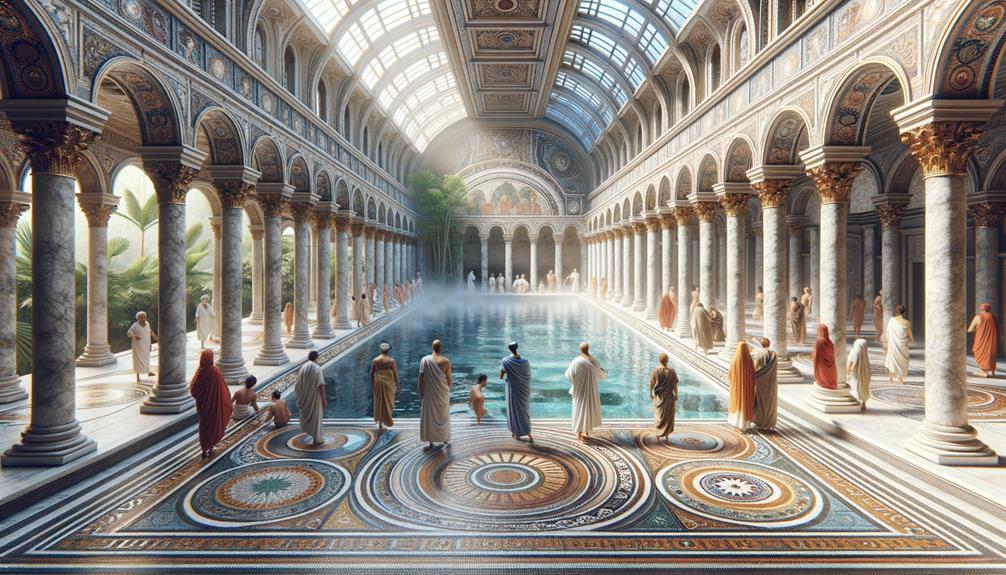
Experiencing the Roman Baths at Campo Valdés is like stepping into an ancient world. The hot rooms, cold plunge pools, and sophisticated hypocaust system give you a glimpse into the daily lives of Roman bathers. As I walked through the well-preserved structures, I was struck by the Romans' ingenuity. The hypocaust system, with its meticulously arranged pilae, heated the floors and walls, creating a warm sanctuary for relaxation and socializing.
In the Circular Bath, a film projection of life-size bathers brings the space to life. Watching these projections, I could almost hear the chatter and laughter that once filled these rooms. The spa water, rich in 43 minerals, has been prized for its therapeutic properties for over 2,000 years. Tasting the water from the traditional fountain in the Pump Room, I felt a connection to those ancient bathers seeking relief and rejuvenation.
Reflecting on this experience, I realized how advanced and community-centric Roman society was. The Roman Baths weren't just about cleanliness; they were an essential part of daily life, fostering health, connection, and a sense of freedom. The ancient Romans understood the importance of community and self-care, and their baths were a testament to this.



